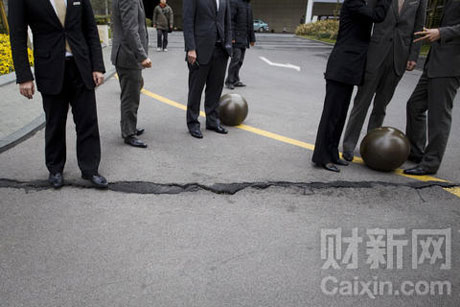
I’m not the resident expert on water usage in China, but there is something unsettling about recent reports out of Shanghai.
Slated to be the China’s tallest building upon completion, the 632-meter tall Shanghai Tower conveys stability, if not permanence.
The ground under it, however, is another story.
Spectators were intrigued in mid-February when a giant 8-meter long crack appeared in the asphalt near the tower. The crack was a reminder of Shanghai’s shifting and sinking ground, which scientists say makes the city vulnerable to rising sea levels.
And Shanghai is not alone. China’s Ministry of Land and Resources recently reported that the ground is sinking under more than 50 cities. The culprit is the overuse of groundwater, the ministry’s Geological Environment Department Deputy Director Tao Qingfa told Caixin.
When residents consume too much groundwater, water pressure underground depletes and causes the soil to shift and sink, Tao said. Beijing, Tianjin, Hangzhou and Xi’an are all sinking in certain places as a result, he said.
I saw this over at foreign policy scholar Walter Russell Mead’s blog. He seems to think the crack is a metaphor for fractures in China more generally, as rifts develop between rich and poor, urban and rural, local and national, authority and spontaneity. As Professor Mead puts it, “Sooner or later, something will give.”
Rapid industrialization doesn’t come easy.